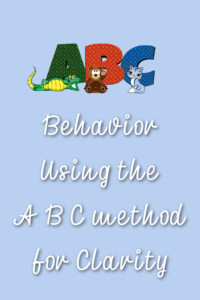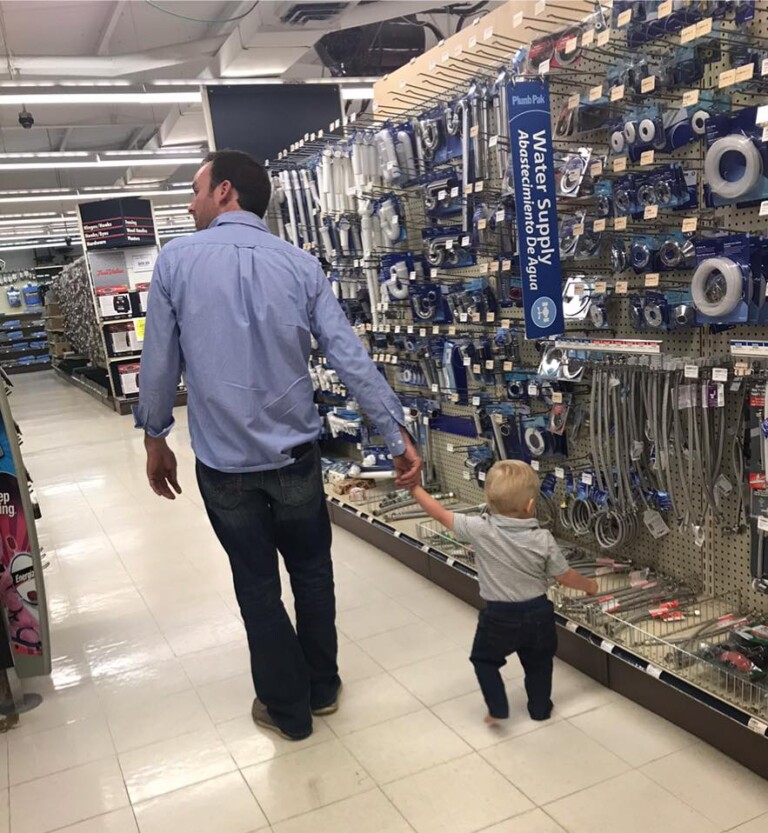Behavior: Using the A B C Method for Clarity
The A B C Manual

Parenting with clarity.
Parenting is hard. Life is busy. We are tired. There is so much to do. We love our kids, but some days it’s hard to know how to parent them well.
One of the best things you can do as a parent is take a step back. Get out of the emotional upheaval when you are frustrated with your child and look at the bigger picture. Instead of getting upset with your child when he scribbles on a wall, has an “accident”, or deliberately destroys something, stop and check the A B Cs.
This does not excuse the child or his behavior, but sometimes it helps us understand what is really happening in his world. And sometimes, a little understanding goes a long way before dealing out harsh consequences for a deed. His actions might actually be his way of asking for help.
A- attitude
What is his attitude? When he does destructive things, is he angry, or does it seem he did it for no reason? When a child’s attitude is calm, his destructiveness can signal, not only anger or rebellion, but also frustration. Follow the trail and figure out the frustration. If your child is mopey or aloof, consider the source. Is he actually subtly defiant, or does he really not feel well or feel hurt or betrayed? Follow the trail and figure out the mopiness before you deal out consequences. Poor behavior begins with attitude. Nix the attitude and you will be far ahead of other behavioral problems. When a child shows disrespect, he’s asking for help. Don’t deny him the help he needs.
B – Behavior
What behavior does he exhibit? When a child pitches a fit or refuses to come out of his room, consider the why behind his behavior. Is he tired? Hungry? Has life been too busy? Is he in the throes of being a Terrible Two? Has he hit adolescence and actually needs more space? Does he suddenly have “accidents” where before he was completely trained? Figure out what is causing this behavior. Don’t deal out consequences unless you know the meaning behind the behavior. Do not make excuses, but do give room for growing-up or fleshing out his frustrations. Behavior relates to specific instances and situations.
C – Conduct
How is his conduct? Conduct is a little wider than behavior. It’s an overall picture of the emotional health of a child. A child acts out aggressively when he is defiant, angry, lonely, or hurting. Aggression, lying, stealing, bullying or fighting are examples of conduct. A child who has continual conduct issues has a problem. If that is your situation, I suggest you go back to A and B and figure out how you got from A and B to C.
The A B C method brings clarity
Too often parents allow themselves to be stymied with the behavior of their kids. We allow ourselves to be defeated before we barely start. When you’re in a quandary and don’t know what to do, take a step back. Think about each of these letters – A B C. Ask yourself these questions and find answers. Figure out why you’re so frustrated. Figure out how to move away from frustration by getting answers to each question.
Parenting is hard work. Don’t make it more difficult by spinning your wheels when you can do the A B Cs instead. Bringing clarity to the situation provides a solution. It gives you momentum and a way forward. Stop panicking and use this A B C method. It works. Ask me how I know!

photo credit: Gerd Altmann/pixabay.com




